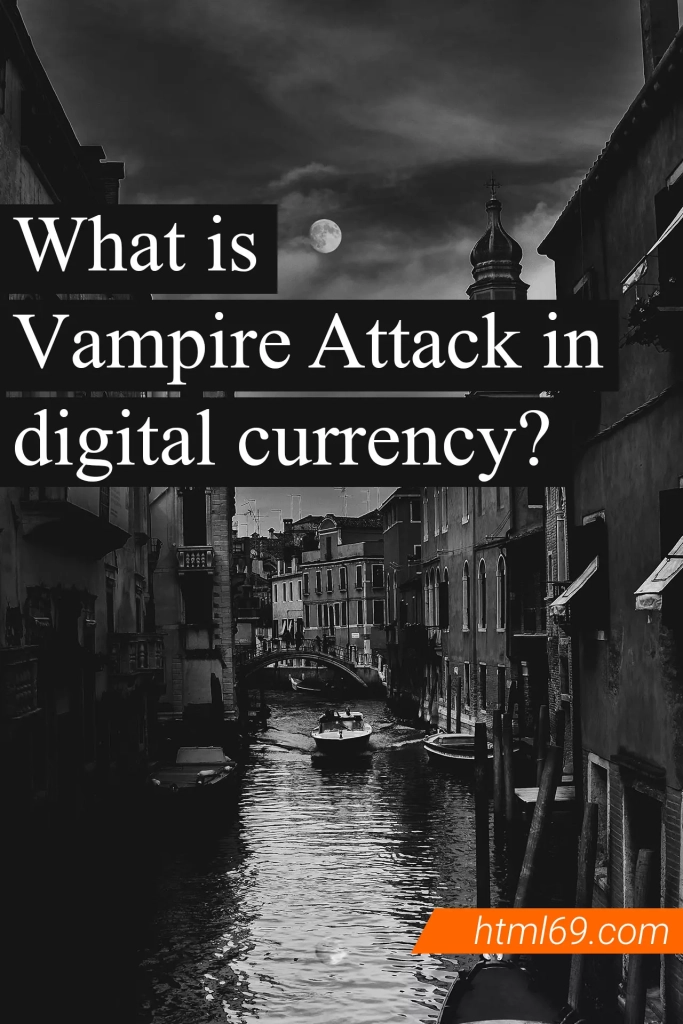The world of digital currency is growing rapidly and new coins and tokens are created every day. Along with the rapid growth of this field, the competition between crypto projects has also increased. The term “vampire attack” is used when a new project exploits other existing projects. In this article, we answer the question of what is a vampire attack and how it is done.
Let’s dive in and explore:
- What is a vampire attack?
- How does a vampire attack happens?
- What are the consequences of a vampire attack?
- Examples of vampire attacks
- Uniswap and Sushiswap
- OpenSea and Looksrare
- How to prevent a vampire attack?
- Frequently asked question on cryptocurrency Vampire Attack
What is a vampire attack?
In a vampire attack, the new project mimics an existing project and makes a copy or similar of that project. The main purpose of the vampire attack is to attract users and increase the volume of transactions and liquidity in the new project. To achieve this goal, new platforms usually set an incentive for new users.
How does a vampire attack happens?
Simply put, a vampire attack is promotional marketing designed to attract more users. By attracting more users, the liquidity and transaction volume of the new platform will also increase. In this strategy, attractive programs are introduced so that users leave the previous platforms and come to the new platform.
For example, if a decentralized exchange (DEX) wants to attract users from other platforms, it can offer users to bring their liquidity tokens (LP) from old platforms to the new platform and receive more profit.
In Vampire Attack, various incentive plans are used to attract users. The most common incentive is to use the new platform tokens for specific applications and to increase liquidity.
With this, the use of tokens, the volume of transactions and the liquidity of the new platform will increase.
What are the consequences of a vampire attack?
In the field of digital currency, a vampire attack may have different consequences. With this attack, existing platforms are affected. As users move from one platform to another, the value of the digital currency of the old platform may decrease drastically, which reduces the liquidity, transaction volume and number of users of that platform.
As the liquidity decreases and the token lock-up period changes, the value of investors’ assets may also decrease and investors may not be able to withdraw their assets on time.
Of course, the vampire attack is not as bad as it seems. This attack is a way to improve the status of old projects through attractive incentive programs.
In addition, it can be used as a stimulus for the development and progress of existing projects.
In general, a vampire attack is a threat to existing digital currency projects in the market, but it can be used as an opportunity to improve the ecosystem of projects.
Examples of vampire attacks
Now that you are familiar with the concept of vampire attack and how it works in the digital currency world, it is better to review some famous cases of this attack that have already happened.
Uniswap and Sushiswap
UniSwap is one of the largest decentralized cryptocurrency exchanges in terms of trading volume and liquidity, but SushiSwap (a fork of UniSwap) is a relatively new project that wants to outdo UniSwap by offering more rewards to liquidity providers.
In its vamp attack, SushiSwap first created a new token (SUSHI) that was very similar to one of the tokens in the market. Then it tried to encourage users to buy his token by offering attractive rewards.
Sushi Swap gives more profit to those liquidity providers who swap their UNI tokens with SUSHI tokens. 1,000 SUSHI tokens will be distributed on the Ethereum network to suppliers who transfer from UniSwap to SushiSwap liquidity pools such as LINK-ETH or YFI-ETH.
If SushiSwap can encourage many users to buy its token, it means it is successful in its attack and the value of UNI token may decrease.
SushiSwap’s vampire attack was successful in the short term and managed to drain liquidity from UniSwap.
OpenSea and Looksrare
OpenSea is the largest NFT (Non-Fungible Token) market by trading volume. This market was launched in 2017 and allows users to buy, sell and trade NFTs. OpenSea supports a variety of assets in the fields of art, gaming, and collectibles.
In early 2022, the new Looksrare marketplace introduced a very attractive incentive program to attract users from various platforms (including OpenSea). In a very large airdrop, Looksrare donated 120 million LOOKS tokens to the NFT user community.
Thanks to the transparent nature of the blockchain, the Looksrare team identified the most active OpenC traders to reward them with LOOKS tokens, but to receive these rewards, each user had to list a unique token on the Looksrare market.
This strategy caused the volume of transactions and a large number of OpenSea users to be transferred to Looksrare. In just a few days, Looksrare’s trade volume tripled compared to OpenSea.
How to prevent a vampire attack?
A vampire attack is considered a risk for the digital currency industry, and with the emergence of new projects and investment opportunities in this industry, the risk of this type of attack also increases.
By applying the following tips, you can largely protect your capital from vampire attacks.
Many investors do not realize that their capital may be locked in a platform for a period of time. This means that the investor cannot sell or withdraw his tokens for a while.
If you want to invest in a project, be sure to pay attention to the capital lock period and its duration. In this case, even if the project’s incentive program weakens over time, you can keep your capital.
When a project becomes famous and popular, it becomes the target of imitators and copycats. These imitators try to fork the project and make a custom version of it.
To counter this, the project should make it harder for others to fork. For example, it has advanced features or a large and committed user community.
Frequently asked question on cryptocurrency Vampire Attack
What is a vampire attack?
When a new project creates an example and mimics an old project, that project has been attacked by a vampire.
What examples of vampire attacks do we have in the cryptocurrency market?
Famous examples of vampire attacks include SushiSwap’s attack on UniSwap and LooksRare’s attack on OpenSea.
Vampire Attack is a relatively new concept in the field of digital currency, but in this short period of time it has had significant effects for some platforms.
This attack does not directly affect investors, but it can cause the evacuation of users of valid digital currency platforms. Of course, this type of attack sometimes creates a new opportunity for investors and can be very profitable.
In this article, we explained what a vampire attack is and how it affects crypto platforms. If you have any comments or questions about this article, please share them with us.

